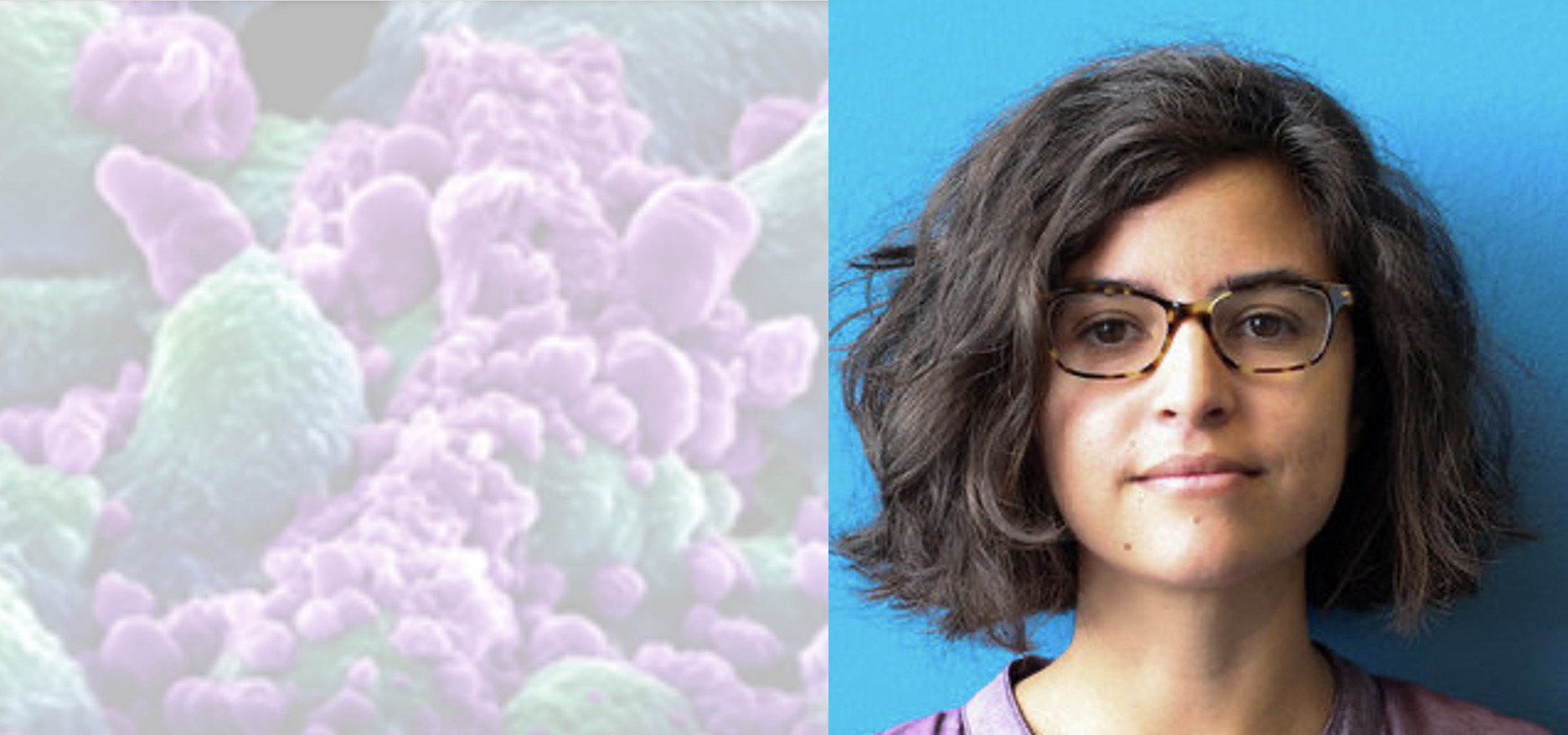Joana Goncalves
With 6.4 billion “letters” encoding for 20,000 genes in the human genome, and for many other molecules, it is an enormous challenge to find patterns that link what happens in a cell to complex diseases and potential therapies. But that is exactly what Rising Star Joana Gonçalves tries to achieve.
We design methods to identify patterns in high-dimensional molecular data, for disease diagnosis and therapy

Initially torn between engineering and medical sciences, Joana chose to study computer science as she was curious to dive deeper into reasoning and logic. But by the time of her master’s thesis, she had reunited her interests by applying computer science to a medical problem. A Marie Curie research grant brought her to the Netherlands, after which she took a combined postdoc position at TU Delft and the Netherlands Cancer Institute (NKI).
As an Assistant Professor in Computer Science, she is building up her research group in Computational Biomedicine. ‘That is the short catchy title for what we do,’ she says with a smile. ‘We develop and apply algorithms and machine learning methods to identify patterns, disruptions, in high-dimensional molecular cell data – for disease diagnosis and therapy.’
Like a haystack, but much worse
Her quest often starts with a medical or biological challenge. ‘We then work backwards, to develop suitable computational methods to tackle that research goal,’ Joana says. ‘We seek to understand the underlying biology, so that our technical choices make sense in biological terms.’
With millions of parameters, finding differences between patients and healthy control groups makes finding a needle in a haystack look easy. ‘One challenge is that we often have a limited number of samples, and quite some variation already within each group,’ Joana says. ‘And many existing mathematical models expect all parameters, such as the expression of individual genes, to be independent. But genes work together to perform biological tasks.’
Lethal, in pairs
In one of her current research projects, the goal is to predict synthetically lethal pairs of genes. Sometimes, a cell can survive when one or the other gene is disrupted, but it will die when both are disrupted at the same time. Joana: ‘If one of these genes is frequently mutated in cancer cells, it creates a therapeutic opportunity. You could design a drug to target the lethality partner gene and selectively kill cancer cells while healthy cells would continue to function normally.’
A problem that machine learning models for this task run into is that training data is heavily biased. Experiments to quantify synthetic lethality are laborious and expensive, meaning that most data focus on a limited set of genes associated with cancer, which therefore is not representative of most untested genes. ‘We are developing strategies for making machine learning models more robust to selection bias, so that they generalise better,’ Joana explains. ‘This is a fundamental challenge in machine learning and AI, so a solution would find broad applications. Mitigating selection bias can improve fairness of AI models that make decisions with an impact on people’s lives.’ It’s a prime example of how her research is often both applied and fundamental.
Our research is both fundamental and applied, ranging from strategies to mitigate selection bias in machine learning to models for therapeutic target discovery
Little steps
Building a bridge between computer science and medical expertise, most of her current collaborations are with researchers at medical centres – the LUMC on DNA repair deficiency and proton therapy, Erasmus MC on individualised cellular models in the context of Convergence, and internationally the Vanderbilt University on multimodal molecular atlases. ‘Interest in computer science has exploded in recent years,’ Joana says. ‘At some point, one course I teach at TU Delft was attended by 900+ students. That is a large pool of good students, of research talent, that we can attract.’
Making long days at work, Joana relaxes by taking walks with her partner and her dog, and by tending to the ever-growing plant wilderness in her house. On the biomedical side, she would love to identify a therapeutic target that makes its way into the clinic. ‘But it doesn’t have to be of such ground-breaking impact as a successful treatment for cancer,’ she says. ‘What we do in all these little steps is already quite rewarding. We constantly make discoveries and learn new things.
TU Delft has a large pool of good students, of research talent, that we can attract